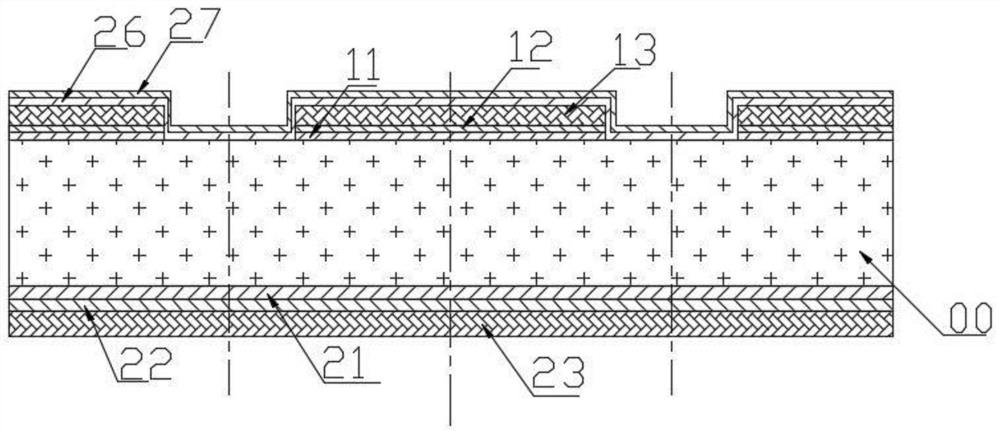Back contact heterojunction solar cell with by low laser damage as characteristic, and and manufacturing method thereof
A technology for solar cells and manufacturing methods, applied in photovoltaic power generation, final product manufacturing, sustainable manufacturing/processing, etc., can solve problems such as sensitivity to laser thermal effects, and achieve the effects of controlling laser damage, decreasing aperture ratio, and reducing processes
- Summary
- Abstract
- Description
- Claims
- Application Information
AI Technical Summary
Problems solved by technology
Method used
Image
Examples
preparation example Construction
[0068] The preparation process of the hydrogen-doped indium oxide thin film is to use pure indium oxide as a target material, then introduce hydrogen or water vapor into the process gas, and form a hydrogen-doped indium oxide thin film by physical vapor deposition.
[0069] The specific method of the step F is to print the anti-plating ink on the conductive layer obtained through the step E treatment.
[0070] The specific method of the step G is to prepare the first conductive region electrode and the second conductive region electrode by electroplating on the first conductive region and the second conductive region treated in the step C.
[0071] The specific process of step G is to form an electroplated copper grid electrode by immersion or horizontal brush contact, and form a protective tin of 100 nanometers to 5 microns on the copper grid electrode by covering it with chemical tin or electroplating tin. Floor.
[0072] The specific method of the step H is, after the trea...
PUM
| Property | Measurement | Unit |
|---|---|---|
| Thickness | aaaaa | aaaaa |
Abstract
Description
Claims
Application Information
 Login to View More
Login to View More - R&D
- Intellectual Property
- Life Sciences
- Materials
- Tech Scout
- Unparalleled Data Quality
- Higher Quality Content
- 60% Fewer Hallucinations
Browse by: Latest US Patents, China's latest patents, Technical Efficacy Thesaurus, Application Domain, Technology Topic, Popular Technical Reports.
© 2025 PatSnap. All rights reserved.Legal|Privacy policy|Modern Slavery Act Transparency Statement|Sitemap|About US| Contact US: help@patsnap.com



